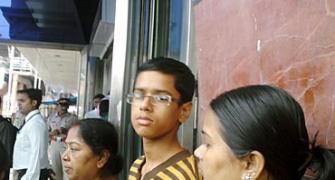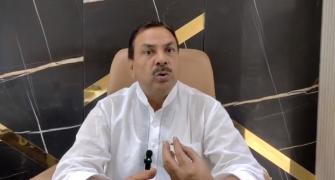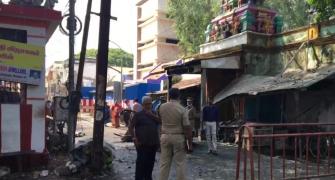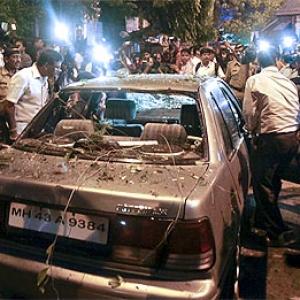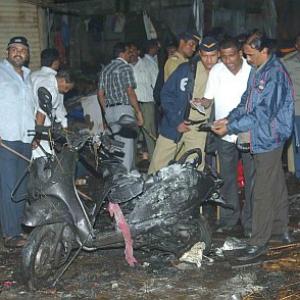Terror outfits have realised that large modules are easier to track down. Intelligence warn that fringe groups operating with only a handful of terrorists may emerge as the newest terror threat. Vicky Nanjappa reports.
Investigating agencies probing the Mumbai serial blasts of July 11 are trying to ascertain if the Indian Mujahideen or the underworld had played any role in the terror strike that claimed 26 lives.
They have been unable to pinpoint a motive for the blasts so far, say sources.
The fact that the terrorists carried out the deadly blasts without relying much on technology has also stumped investigators. Terror outfits like the Indian Mujahideen are known to use sophisticated technology while executing terror strikes.
Investigating teams have often cracked these cases by following the technology trail. But officials have been unable to track any technological clues in this case.
The police and various teams probing the blasts have no leads so far, say sources.
"There is nothing to show that any of the nearby terror modules were active. There are signs of a gradual attempt at re-grouping, but none of the modules have shown any signs of carrying out such an attack," said an official associated with the investigations.
Investigators have failed to find any links between the blasts and the underworld as there is no reason why the latter would carry out such an attack.
But police officials are keeping in touch with informers and small time operatives for more information.
Mohammad Zaid, who was arrested in Nepal in connection with the blasts, has not provided any information about the case. Though he has not been given a clean chit by the authorities yet, they believe that he has no information about the serial blasts.
The footage from CCTV at the site, which had been analysed thoroughly, has not provided any concrete clues. The men who planted the bombs managed to make a quick exit; even the sketch prepared by the police has not provided any leads.
The forensics team has figured out how the bomb was assembled, but this information has not been of much help. Terror outfits no longer leave a signature behind in terms of the bomb composition and most of the explosives are assembled in a similar manner.
It is also difficult to ascertain where the explosive material has been procured from as the Mumbai serial blasts was carried out by a small group involving maximum ten people.
Small terror modules carrying out major terror strikes is a relatively new phenomenon, say intelligence agencies.
Terror outfits have realised that large modules are easier to track down, they say, warning that fringe groups operating with only a handful of terrorists may emerge as the newest terror threat.

